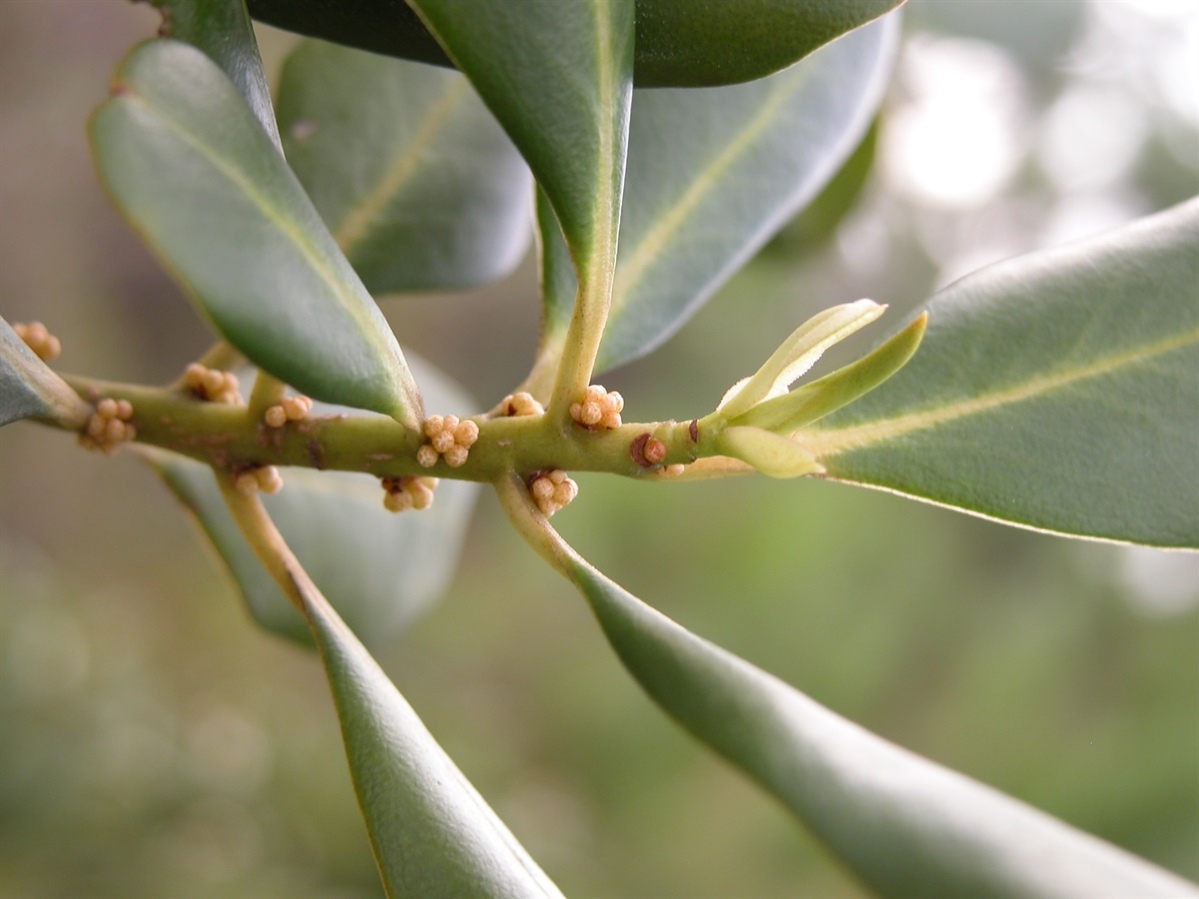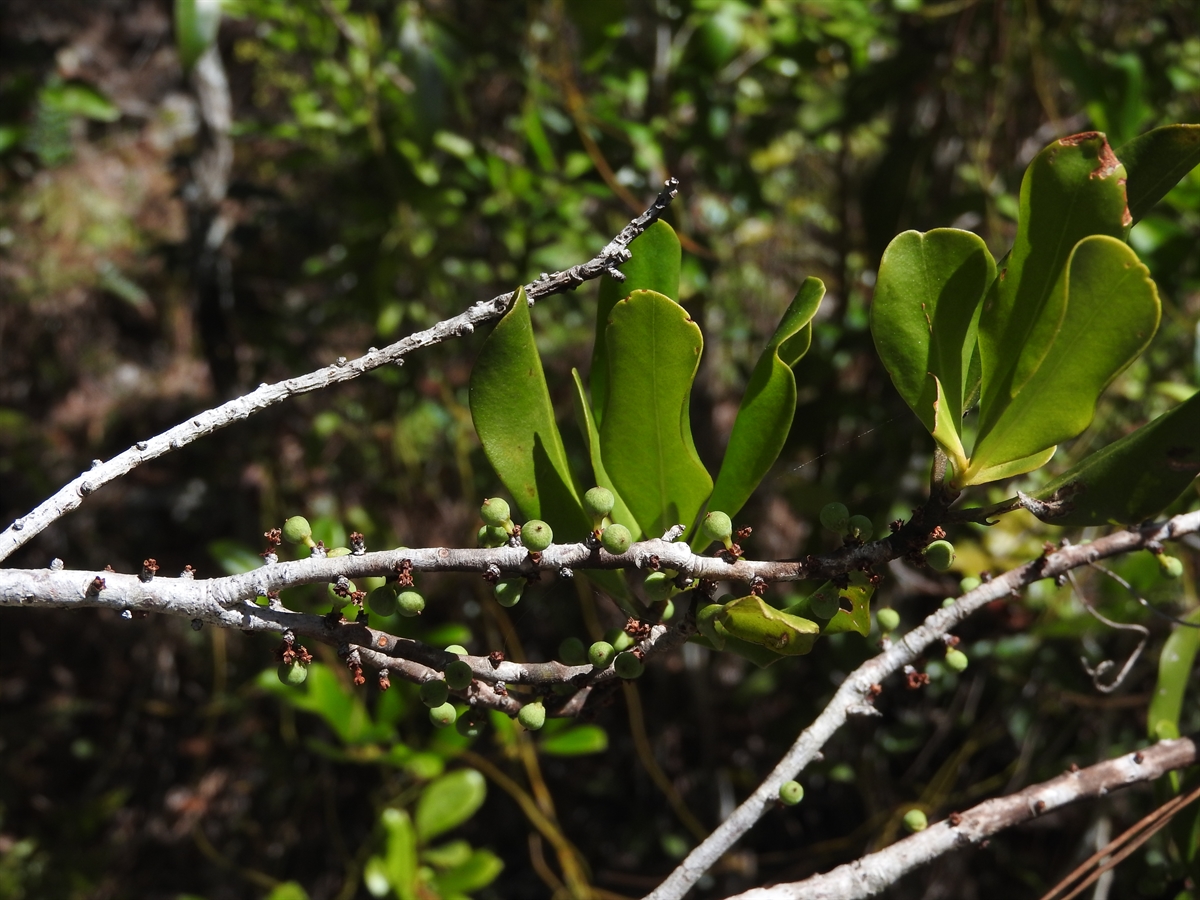Habit: Myrsine cubana grows as a glabrous shrub to small tree up to 6 meters in height. The leaves are arranged alternately, oblong to oblanceolate, slightly fleshy, up to 10 cm long (typically shorter), with a rounded leaf apex and an entire margin.
Myrsine cubana is monoecious. The incomplete, imperfect, actinomorphic flowers occur in clusters along the stems. The calyx has 5 unfused, green sepals occurring as triangular lobes. The corolla has 5 fused, white/green, glandular petals. In staminate flowers there are stamens fused to the petals and 5 staminodes and a nonfunctional carpel. In carpellate flowers there are 5 staminodes and a superior ovary with 1 locule and ovule. The ovary is superior with 1 locule and many ovules. The fruit is a black drupe at maturity.
Habitat: Myrsine cubana grows in Dry Broadleaf Evergreen Formation- Forest/Shrubland (coppice and savannas) and Pine Woodlands.
Distribution: Myrsine cubana occurs on the northern island groupings in the Lucayan Archipelago, the Greater Antilles, southern Mexico, and Central America as well as Florida.
Medicinal/Cultural/Economic usage: Myrsine cubana is not known to be used medicinally in the Lucayan Archipelago.

